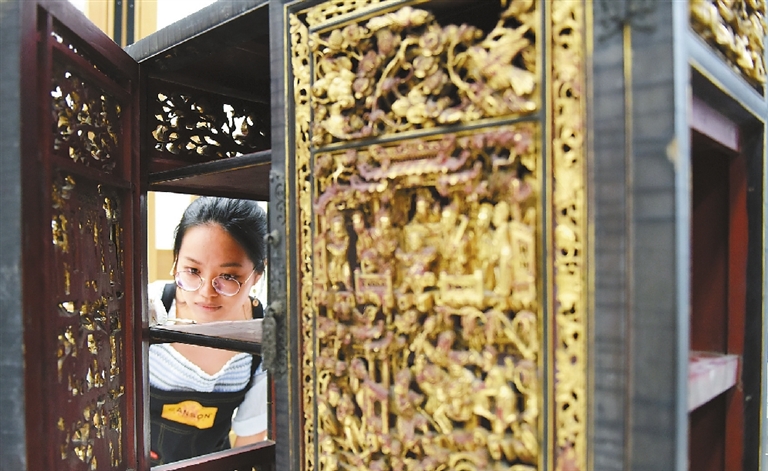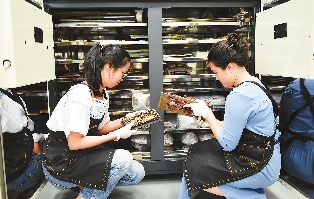

LI ZIYING dips a cotton swab into a glass of water and carefully swipes it across the surface of a wood carving. Then she takes off the cotton tip, dehydrates it and puts it in a plastic bag. The plastic bag is documented and archived, and Li, 22, sits down to go through the process once more. Li is a senior student in Guangzhou Academy of Fine Arts and works in a studio at the academy dedicated to restoring Chaozhou wood carvings. Chaozhou wood carving is a form of wood carving from South China’s Chaozhou region of Guangdong Province. Originating from as early as the Tang Dynasty (618-907), it was listed as a national intangible heritage item in 2006. Due to the high humidity in South China, wood decays easily, causing many Chaozhou wood carvings to degrade. Young art students like Li work as assistants to restore the carvings. Restoring artifacts became a sought-after practice in China with the popularity of a 2016 documentary from China’s State broadcaster CCTV about the life and work of restorers in the Palace Museum. “When people know we are restoring ancient artifacts, their first response is always, ‘So cool’!” Li said. “However, this is actually very tiring work.” The process is long: using ultraviolet scans to inspect the condition of the items, clearing the surface with professional tools, gathering dust and fallen parts, categorizing them, repainting, taping parts and reinforcing carvings. It can take hours or even days to finish one piece and the quality standards are high. Li and her colleagues sometimes work until 10 p.m. Li used to restore aged oil paintings in her academy, but the process of restoring ancient wood carving is completely different from her previous work. Dust, fragments, cotton swabs, even shells of dead insects on the wood carvings need to be stored and categorized for research. “Each part of the carvings contains information,” Li said. “We cannot miss anything.” The long working hours and meticulous process have not scared away Li and her colleagues, as they have gradually developed a different view of the ancient wood carvings. “Now when I see the carvings, it’s like a doctor seeing a patient,” Li said. “I feel their pain and just want to fix them as soon as possible.” She has been working in the studio for one year and loves her job. Her work is recognized by the professional teachers in the studio. By the recommendation of her mentors at the studio, Li will go to an art school in Avignon in France to study art restoration in August. “I hope to make it my career and become a restorer in the future,” Li said. (Xinhua) | 
